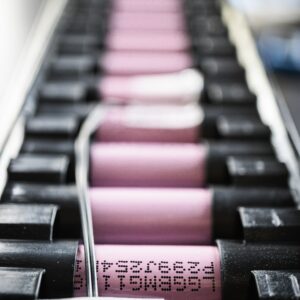First created by Waldemar Jungner in 1899 when he tried to find a cheaper alternative to cadmium as part of nickel-cadmium batteries. After much testing, Jungner abandoned the use of iron as it was too slow to charge. A few years later, Thomas Edison created a nickel-iron battery that powered the Baker Electric and Detroit Electric electric cars.
The cheapness of production has allowed nickel-iron batteries to become in demand in electric vehicles as traction batteries, also used for the electrification of passenger cars, powering control circuits. In recent years, nickel-iron batteries have been the talk of the town, as they do not contain toxic elements such as lead, cadmium, cobalt, etc. Some manufacturers are now promoting them for renewable energy systems.
The accumulation of electricity takes place with nickel oxide-hydroxide used as positive plates, iron as negative plates and the liquid electrolyte in the form of caustic potash. Nickel stable tubes or “pockets” contain the active ingredient
The nickel-iron type is very reliable as it withstands deep discharges, frequent recharges and can also be undercharged, which is very detrimental to lead-acid batteries.




Average Rating